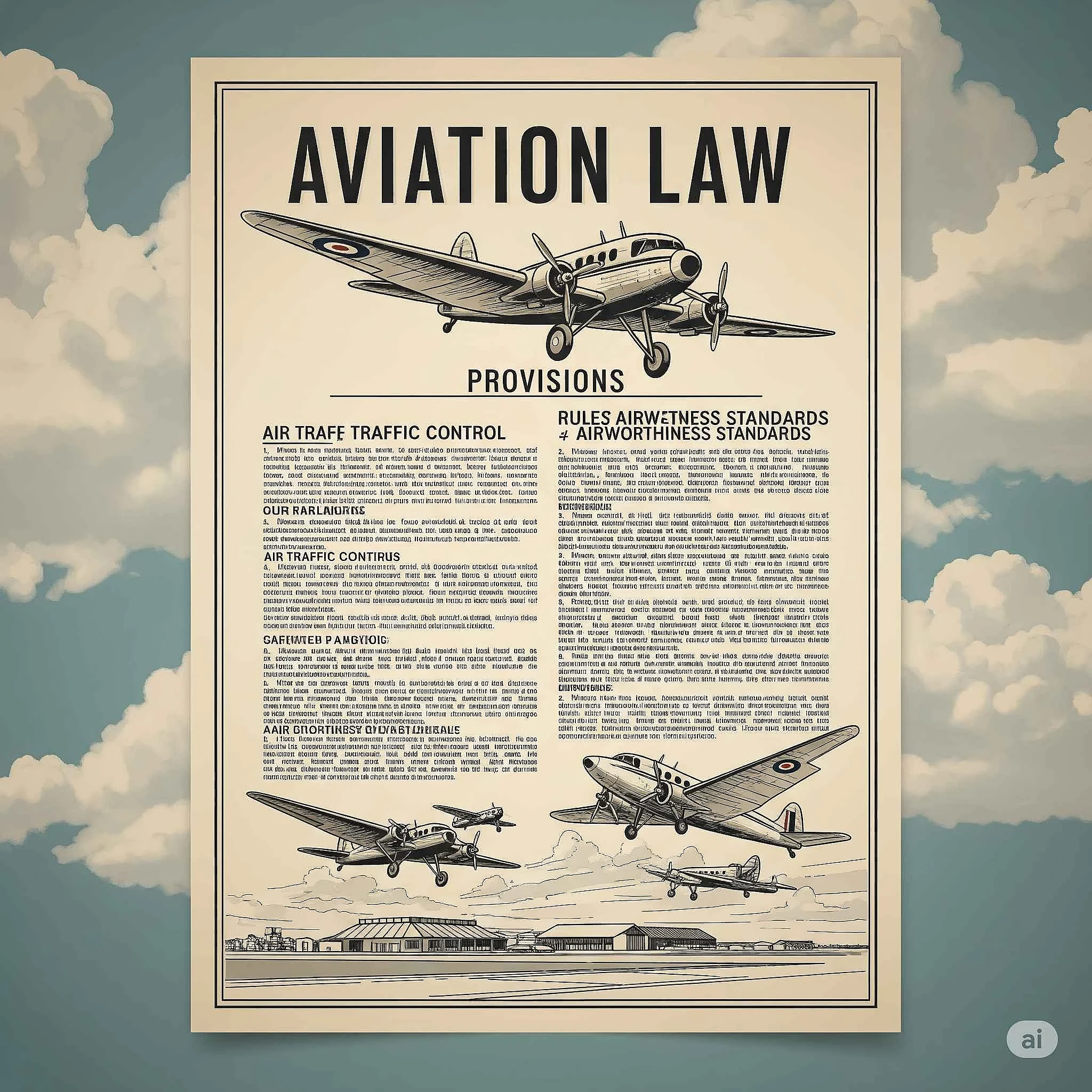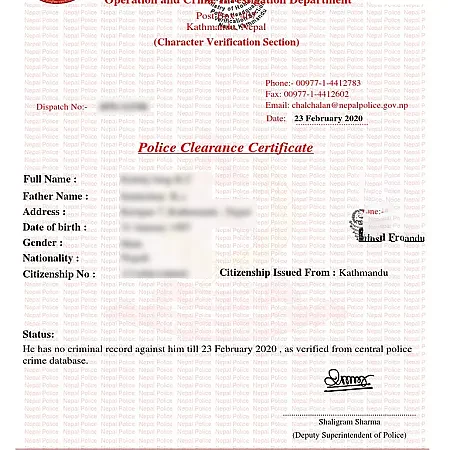Aviation Law in Nepal: Navigating the Legal Framework of the World's Most Challenging Aviation Environment
Nepal's aviation sector operates within one of the world's most demanding geographical and regulatory environments. From the towering peaks of the Himalayas to the complex web of international aviation standards, Nepal's aviation legal framework represents a unique intersection of international law, domestic regulation, and practical necessity. This comprehensive guide examines the current state of aviation law in Nepal, exploring the regulatory landscape that governs one of the world's most challenging aviation environments.
Introduction: The Unique Context of Nepal's Aviation Law
Nepal's aviation industry faces extraordinary challenges that distinguish it from virtually any other aviation jurisdiction globally. The country's mountainous terrain, extreme weather conditions, and limited infrastructure create operational complexities that demand sophisticated legal and regulatory frameworks. Understanding Nepal's aviation law requires appreciating not just the legal instruments themselves, but the extraordinary context in which they must operate.
The legal framework governing Nepal's aviation sector has evolved significantly since the establishment of formal aviation regulations in 1959, culminating in the creation of an independent regulatory authority and a comprehensive body of aviation law that seeks to balance international standards with local realities.
Historical Development and Legislative Foundation
The Civil Aviation Act of 1996: Cornerstone Legislation
The modern foundation of Nepal's aviation law rests upon the Civil Aviation Act of 1996 (2053 BS), which represents the country's primary aviation legislation. This landmark statute established the legal framework for comprehensive aviation regulation in Nepal and created the foundation for the establishment of the Civil Aviation Authority of Nepal (CAAN) in 1998.
The Act encompasses several critical areas:
- Establishment of regulatory authority and governance structures
- Aircraft registration and airworthiness requirements
- Licensing and certification of aviation personnel
- Airport and airspace management provisions
- Safety and security standards
- Enforcement mechanisms and penalties
Evolution from Departmental to Independent Regulation
Prior to 1998, aviation regulation in Nepal was conducted by the Department of Civil Aviation under the Ministry of Work, Communications and Transport, established in 1957. The statutory regulations regarding civil aviation were introduced under the Civil Aviation Act, 1959 (2015 BS). Nepal obtained the membership of International Civil Aviation Organization (ICAO) in 1960. This transition from departmental oversight to independent regulatory authority reflects Nepal's commitment to international best practices in aviation governance.
The Civil Aviation Authority of Nepal (CAAN): Regulatory Architecture
Mandate and Functions
The Civil Aviation Authority of Nepal (CAAN) is an independent civil aviation regulator. It was established as a Nepali government body in 1998 and is headquartered in Kathmandu. CAAN operates with a dual mandate that combines regulatory oversight with operational responsibilities, a structure currently undergoing significant transformation.
The Authority's core functions include:
- Safety oversight and regulatory compliance monitoring
- Aircraft and personnel certification
- Airport licensing and infrastructure oversight
- Air navigation services provision
- Accident and incident investigation
- International aviation relations and treaty implementation
Current Restructuring Initiative
The government has taken a significant step toward restructuring the aviation sector as the cabinet last week approved two crucial bills aimed at splitting the Civil Aviation Authority of Nepal (CAAN) into regulatory and service provider entities. This restructuring, encompassing the Nepal Civil Aviation Authority Bill, 2024 and the Nepal Air Service Authority Bill, 2024, represents the most significant reform of Nepal's aviation governance structure since CAAN's establishment.
The proposed restructuring aims to:
- Separate regulatory functions from service provision activities
- Enhance regulatory independence and effectiveness
- Improve operational efficiency in air navigation services
- Align with international best practices in aviation governance
International Law Integration and Treaty Obligations
The Chicago Convention Framework
Nepal's aviation law framework is fundamentally grounded in international aviation law, particularly the Convention on International Civil Aviation (Chicago Convention) of 1944. Nepal obtained the membership of International Civil Aviation Organization (ICAO) in 1960, establishing the country's commitment to international aviation standards and cooperative frameworks.
The Chicago Convention establishes fundamental principles that Nepal incorporates into its domestic aviation law:
- State sovereignty over airspace
- Freedom of innocent passage for civil aircraft
- Uniform application of air traffic control procedures
- International cooperation in aviation safety and security
- Technical standardization through ICAO Standards and Recommended Practices (SARPs)
ICAO Standards Implementation
Civil Aviation Requirements and Directives are technical regulations framed to implement the SARPs of the Annexes of Chicago Convention and implementation of certain provisions made on Civil Aviation Regulation, 2058. Nepal's regulatory framework systematically incorporates ICAO Annexes covering various aspects of aviation operations:
- Annex 1: Personnel licensing and training requirements
- Annex 6: Operation of aircraft and commercial air transport
- Annex 8: Airworthiness of aircraft
- Annex 14: Aerodromes and airport design standards
- Annex 17: Security protocols and procedures
- Annex 19: Safety management systems
Domestic Aviation Regulations: The Civil Aviation Regulation 2058
Comprehensive Regulatory Framework
The Civil Aviation Regulation 2058 (2002 AD) serves as the primary implementing regulation under the Civil Aviation Act of 1996. This comprehensive regulatory document establishes detailed provisions across all aspects of aviation operations in Nepal, creating a systematic approach to aviation governance that addresses the country's unique operational challenges.
Aircraft Registration and Airworthiness
Nepal maintains a national aircraft registry that adheres to international standards while accommodating the specific operational requirements of aircraft operating in high-altitude, mountainous conditions. The registration system encompasses:
Aircraft Registration Requirements:
- Documentation of ownership and operator responsibilities
- Technical specifications and configuration approvals
- Insurance and liability coverage verification
- Compliance with noise and emission standards
- Special approvals for high-altitude operations
Airworthiness Standards:
- Initial airworthiness certification for new aircraft
- Continuing airworthiness programs and maintenance requirements
- Supplemental type certificates for high-altitude modifications
- Special flight permits and ferry flight authorizations
- Import/export airworthiness procedures
Personnel Licensing and Training
Nepal's pilot licensing system reflects both international standards and the unique training requirements for operating in challenging Himalayan conditions. The licensing framework includes:
Pilot Licensing Categories:
- Private Pilot License (PPL) with mountain flying endorsements
- Commercial Pilot License (CPL) with specific terrain and weather training
- Airline Transport Pilot License (ATPL) with high-altitude operational requirements
- Instructor ratings with specialized mountain flying instruction capabilities
Maintenance Personnel Certification:
- Aircraft Maintenance Engineer (AME) licensing
- Specialized certifications for high-altitude aircraft systems
- Continuing education and recurrency training requirements
- Authorization for specific aircraft types and modification approvals
Airport Regulations and Infrastructure Management
Airport Licensing and Certification
Nepal's challenging topography creates unique requirements for airport design, construction, and operation. The regulatory framework governing airports encompasses stringent standards that exceed typical international requirements in several key areas:
Physical Infrastructure Standards:
- Runway design criteria for mountainous terrain operations
- Navigation aid requirements for challenging approach procedures
- Weather monitoring and reporting systems
- Emergency response and rescue capabilities
- Fuel storage and handling facilities in remote locations
Operational Requirements:
- Air traffic control and communication systems
- Wildlife hazard management programs
- Security screening and access control procedures
- Ground handling service standards
- Noise abatement and environmental compliance
Airspace Management in Challenging Terrain
Nepal's airspace management presents extraordinary complexities due to the country's location between two large aviation markets (India and China) and its extremely varied topography. The regulatory framework addresses:
Airspace Classification and Control:
- Controlled airspace around major airports
- Mountainous area navigation procedures
- Cross-border coordination with adjacent states
- Military-civilian airspace coordination
- Special use airspace for mountaineering and tourism activities
Navigation and Communication Requirements:
- Ground-based navigation aid specifications
- Satellite-based navigation system implementation
- Emergency communication procedures
- Weather reporting and forecasting systems
- Search and rescue coordination procedures
Commercial Aviation Law and Airline Operations
Air Operator Certification
The legal framework governing commercial aviation in Nepal establishes comprehensive requirements for airline certification and operations. These requirements reflect international standards while addressing the specific operational challenges of Nepal's aviation environment:
Air Operator Certificate (AOC) Requirements:
- Demonstration of operational capability and safety management
- Financial fitness and insurance coverage verification
- Aircraft fleet composition and maintenance arrangements
- Flight crew training and qualification programs
- Operations manual and procedure documentation
Operational Specifications:
- Route authority and destination approvals
- Aircraft type and configuration limitations
- Special operational approvals (high altitude, specialized approaches)
- Seasonal and weather-related operational restrictions
- International service authority and bilateral agreement compliance
Consumer Protection and Passenger Rights
Nepal's aviation law framework includes provisions designed to protect passenger rights and establish airline liability frameworks. These provisions address:
Passenger Rights Framework:
- Flight delay and cancellation compensation procedures
- Baggage loss and damage liability limits
- Accessibility requirements for passengers with disabilities
- Complaint resolution procedures and regulatory oversight
- International service consumer protection standards
Airline Liability Provisions:
- Warsaw/Montreal Convention implementation for international services
- Domestic liability limits and insurance requirements
- Cargo and mail handling liability frameworks
- Third-party liability and surface damage coverage
- Special provisions for adventure tourism and charter operations
Aviation Safety and Accident Investigation
Safety Management Systems
Nepal's aviation safety framework emphasizes proactive safety management through systematic approaches that address both regulatory compliance and operational risk management:
Regulatory Safety Oversight:
- State Safety Programme (SSP) implementation
- Safety Management System (SMS) requirements for operators
- Safety performance monitoring and trend analysis
- Voluntary safety reporting programs
- International safety audit compliance (ICAO USOAP)
Operational Safety Requirements:
- Flight data monitoring and analysis programs
- Crew resource management and human factors training
- Fatigue risk management systems
- Weather and terrain awareness requirements
- Emergency response and contingency planning
Accident Investigation Framework
Nepal maintains an independent accident investigation system that adheres to international standards while addressing the unique challenges of investigating accidents in remote, mountainous terrain:
Investigation Authority Structure:
- Independent accident investigation authority
- Specialized investigation capabilities for mountain accidents
- International cooperation and assistance protocols
- Victim family support and compensation procedures
- Safety recommendation implementation and monitoring
Investigation Procedures:
- Immediate response and evidence preservation protocols
- Specialized recovery techniques for mountain locations
- International expert assistance and consultation
- Public reporting and transparency requirements
- Follow-up safety action implementation
Environmental Regulations and Sustainability
Environmental Impact Assessment
Nepal's aviation environmental regulations address both local environmental impacts and international climate change commitments:
Noise Control Measures:
- Airport noise monitoring and abatement programs
- Aircraft noise certification requirements
- Community consultation and mitigation procedures
- Land use planning around airports
- Noise-related operational restrictions
Emissions and Climate Impact:
- Aircraft engine emission standards
- Carbon offsetting and reduction programs
- Sustainable aviation fuel promotion initiatives
- Environmental management system requirements
- International climate agreement compliance
Wildlife and Conservation Interface
Nepal's unique biodiversity and conservation priorities create specific regulatory requirements for aviation operations:
Wildlife Hazard Management:
- Airport wildlife hazard assessment and mitigation
- Flight routing to minimize conservation area impact
- Seasonal restrictions for wildlife protection
- Coordination with conservation authorities
- Emergency wildlife incident response procedures
Recent Developments and Legal Reforms
Modernization Initiatives
Nepal's aviation law framework continues to evolve in response to technological developments, international best practices, and lessons learned from operational experience:
Regulatory Modernization:
- Performance-based navigation (PBN) implementation requirements
- Unmanned aircraft systems (UAS) regulatory framework development
- Digital transformation of regulatory processes
- Risk-based oversight methodology adoption
- Cybersecurity and data protection requirements
International Harmonization:
- Bilateral aviation services agreement negotiations
- Regional aviation cooperation initiatives
- International safety and security standard alignment
- Mutual recognition arrangements for certifications
- Cross-border emergency response coordination
Pending Legislative Developments
The current restructuring of CAAN represents the most significant aviation law development in Nepal since the authority's establishment. Minister for Culture, Tourism, and Civil Aviation, Badri Pandey, has urged lawmakers and concerned stakeholders to expedite the passage of two key aviation-related bills: the Nepal Civil Aviation Authority Bill, 2024 and the Nepal Air Service Authority Bill, 2024.
These legislative developments aim to:
- Enhance regulatory independence and effectiveness
- Improve operational efficiency in air navigation services
- Strengthen safety oversight capabilities
- Facilitate private sector participation in aviation services
- Modernize legal frameworks for emerging technologies
Unique Challenges in Nepal's Aviation Legal Framework
Geographical and Operational Challenges
Nepal's aviation law must address challenges that are virtually unique in the global aviation community:
High-Altitude Operations:
- Aircraft performance limitations at extreme altitudes
- Specialized training requirements for high-altitude flight
- Weather-related operational restrictions and procedures
- Emergency response in remote mountain locations
- Infrastructure limitations in challenging terrain
Cross-Border Complexities:
- Coordination with Indian and Chinese aviation authorities
- Overflight permissions and route planning
- Emergency landing and assistance agreements
- Cultural and linguistic considerations in international operations
- Sovereignty issues in disputed border areas
Economic and Development Constraints
The legal framework must balance international standards with the practical limitations of a developing economy:
Infrastructure Development:
- Funding limitations for airport and navigation aid improvements
- Technical expertise and training resource constraints
- Maintenance and support challenges in remote locations
- Technology transfer and local capacity building requirements
- Sustainability of small airport operations
Economic Regulation:
- Market access and competition policy development
- Consumer protection in limited market conditions
- International service development and bilateral negotiations
- Tourism industry integration and coordination
- Economic impact assessment and development planning
Comparative Analysis with International Best Practices
Regulatory Independence and Effectiveness
Nepal's current dual-function regulatory model contrasts with international trends toward separation of regulatory and operational functions. The pending restructuring aligns Nepal more closely with international best practices exemplified by authorities such as:
- European Aviation Safety Agency (EASA) regulatory model
- United States Federal Aviation Administration (FAA) oversight approach
- Transport Canada civil aviation regulatory framework
- Australia's Civil Aviation Safety Authority (CASA) structure
Safety Oversight and Risk Management
Nepal's safety oversight framework incorporates international best practices while adapting to local conditions:
International Alignment:
- ICAO State Safety Programme implementation
- Safety Management System requirements
- Performance-based oversight methodologies
- International cooperation in safety initiatives
- Continuous improvement and learning systems
Local Adaptation:
- Mountain flying safety protocols
- Weather-related operational procedures
- Emergency response in challenging terrain
- Cultural and linguistic considerations in safety communication
- Resource optimization for effective oversight
Future Directions and Emerging Issues
Technology Integration and Modernization
Nepal's aviation law framework faces significant challenges and opportunities in adapting to technological developments:
Digital Transformation:
- Electronic flight bag and navigation system integration
- Digital air traffic management system implementation
- Automated weather reporting and forecasting systems
- Blockchain applications for certification and documentation
- Artificial intelligence in safety analysis and prediction
Unmanned Aircraft Systems:
- Commercial drone operation regulation development
- Integration with manned aircraft operations
- Privacy and security considerations
- Cross-border operation coordination
- Emergency services and disaster response applications
Sustainability and Environmental Responsibility
Future legal framework development must address growing environmental concerns and international climate commitments:
Carbon Reduction Initiatives:
- Sustainable aviation fuel mandates and incentives
- Carbon offsetting requirements and mechanisms
- Fuel efficiency standards and operational procedures
- International climate agreement implementation
- Green airport development and certification
Conservation Integration:
- Enhanced wildlife protection measures
- Conservation area overflight restrictions and procedures
- Sustainable tourism development coordination
- Community consultation and benefit-sharing mechanisms
- Environmental impact assessment and mitigation requirements
Enforcement Mechanisms and Compliance
Regulatory Enforcement Structure
Nepal's aviation law enforcement mechanisms reflect the authority's dual regulatory and operational responsibilities:
Inspection and Oversight:
- Scheduled and unscheduled safety audits
- Compliance monitoring and corrective action procedures
- International coordination in enforcement activities
- Voluntary compliance programs and incentives
- Progressive enforcement and penalty structures
Penalty and Sanction Framework:
- Administrative penalties and corrective actions
- Certificate suspension and revocation procedures
- Criminal referral for serious violations
- Civil liability and compensation mechanisms
- International cooperation in enforcement actions
Challenges in Rural and Remote Operations
Enforcement of aviation regulations in Nepal's remote and mountainous regions presents unique challenges:
Access and Communication:
- Limited infrastructure for regulatory presence
- Communication challenges in remote locations
- Weather-related access limitations
- Resource constraints for comprehensive oversight
- Local community integration and cooperation
Capacity Building:
- Local inspector training and certification
- Technical expertise development in remote areas
- Community awareness and education programs
- Stakeholder engagement and cooperation
- Resource sharing and optimization strategies
Conclusion: The Path Forward for Nepal's Aviation Law
Nepal's aviation legal framework represents a remarkable achievement in balancing international standards with the practical realities of operating in one of the world's most challenging aviation environments. The current restructuring initiative, pending legislative developments, and ongoing modernization efforts position Nepal to continue its evolution toward a more effective, efficient, and internationally aligned aviation regulatory system.
The success of Nepal's aviation law framework depends on several critical factors:
Continued International Cooperation: Maintaining strong relationships with international aviation organizations, bilateral partners, and regional cooperation initiatives remains essential for Nepal's aviation development.
Investment in Capacity Building: Developing local expertise, training programs, and institutional capabilities will be crucial for effective implementation of increasingly sophisticated regulatory requirements.
Adaptation to Emerging Technologies: The legal framework must continue to evolve to address new technologies, operational procedures, and safety management approaches while maintaining the flexibility to adapt to Nepal's unique operational environment.
Stakeholder Engagement: Effective consultation and cooperation with industry stakeholders, local communities, and international partners will be essential for successful implementation of aviation law reforms.
Environmental and Social Responsibility: Future development must balance aviation growth with environmental protection, community interests, and sustainable development objectives.
Nepal's aviation law framework stands as a testament to the country's commitment to safe, secure, and sustainable aviation development. As the sector continues to evolve, the legal and regulatory framework will play an increasingly important role in ensuring that Nepal's aviation industry can meet the challenges and opportunities of the 21st century while serving the transportation needs of the Nepali people and the international community.
The ongoing transformation of Nepal's aviation governance structure represents not just a regulatory reform, but a fundamental reimagining of how aviation law can serve development objectives while maintaining the highest standards of safety and international compliance. As these changes unfold, Nepal's aviation legal framework will continue to serve as an important case study in how small nations can develop sophisticated, effective aviation governance systems that meet both international standards and local needs.
Through continued commitment to legal excellence, international cooperation, and innovative solutions to unique challenges, Nepal's aviation law framework will remain a vital foundation for the country's economic development, international connectivity, and aviation safety leadership in the region.




